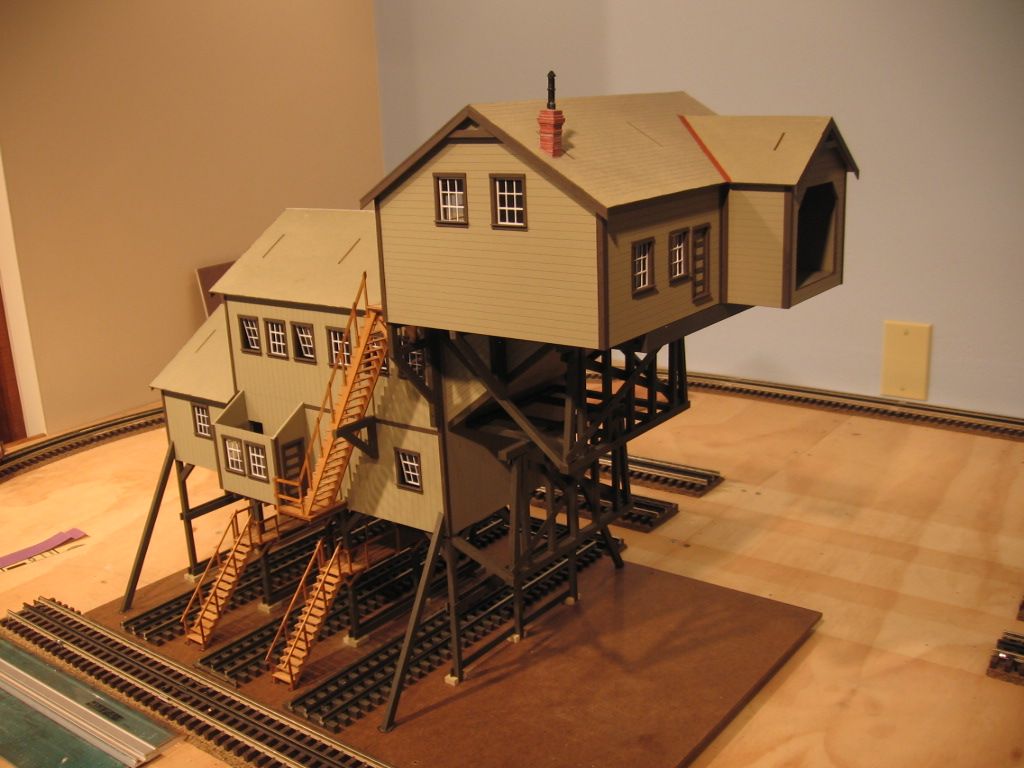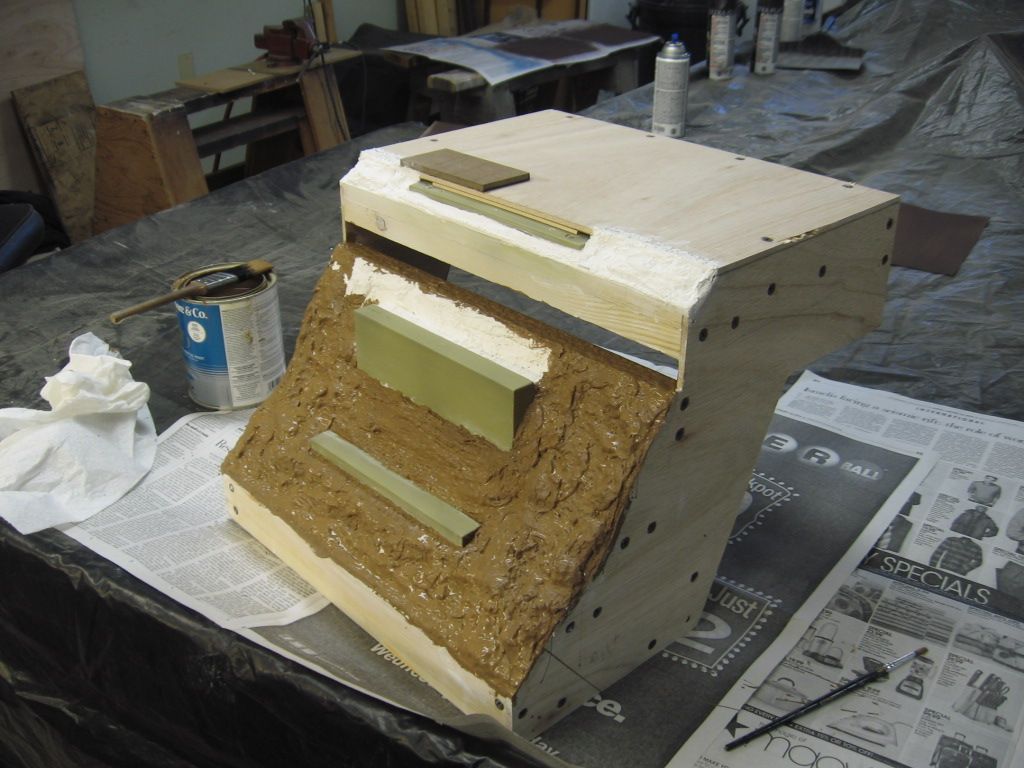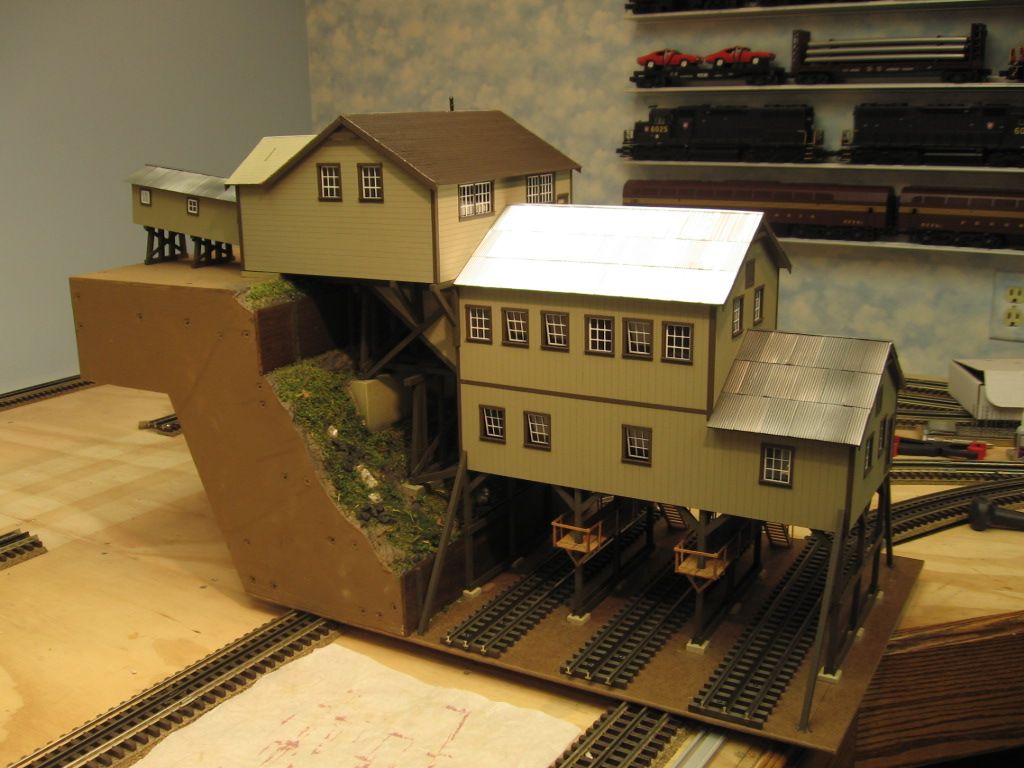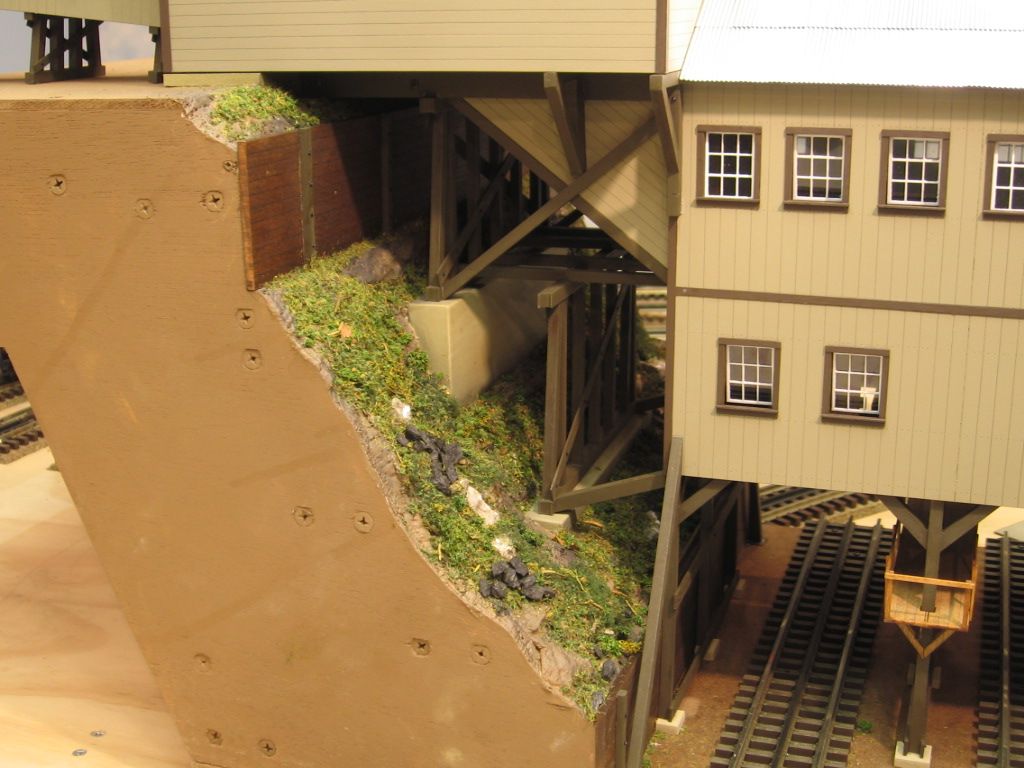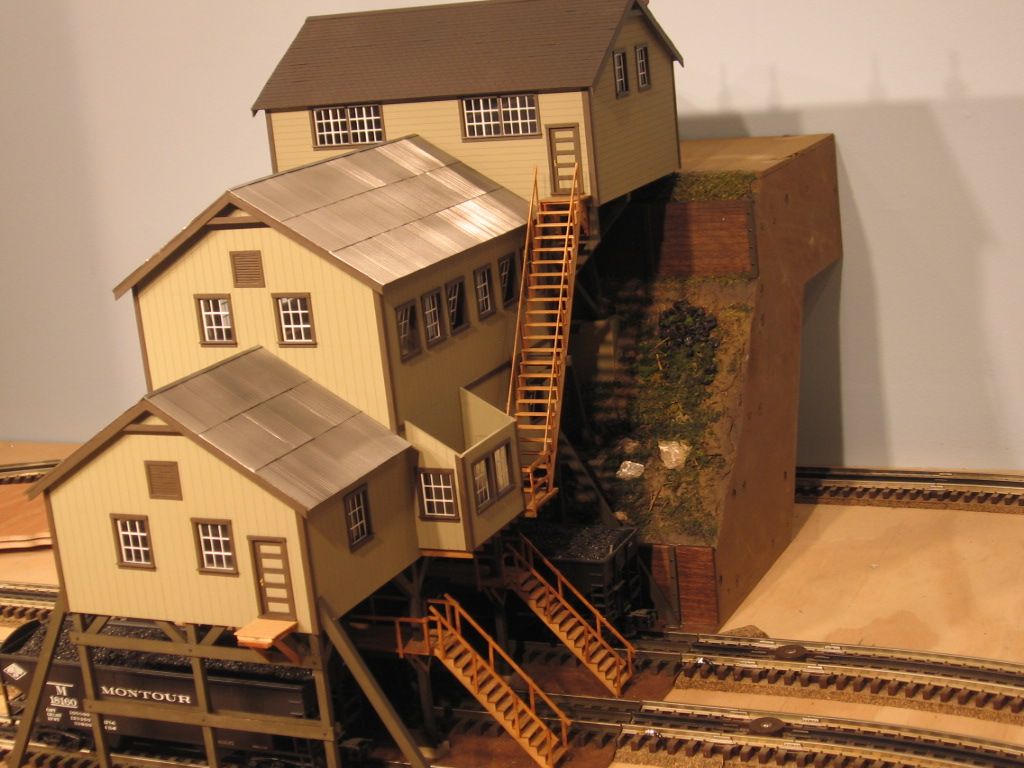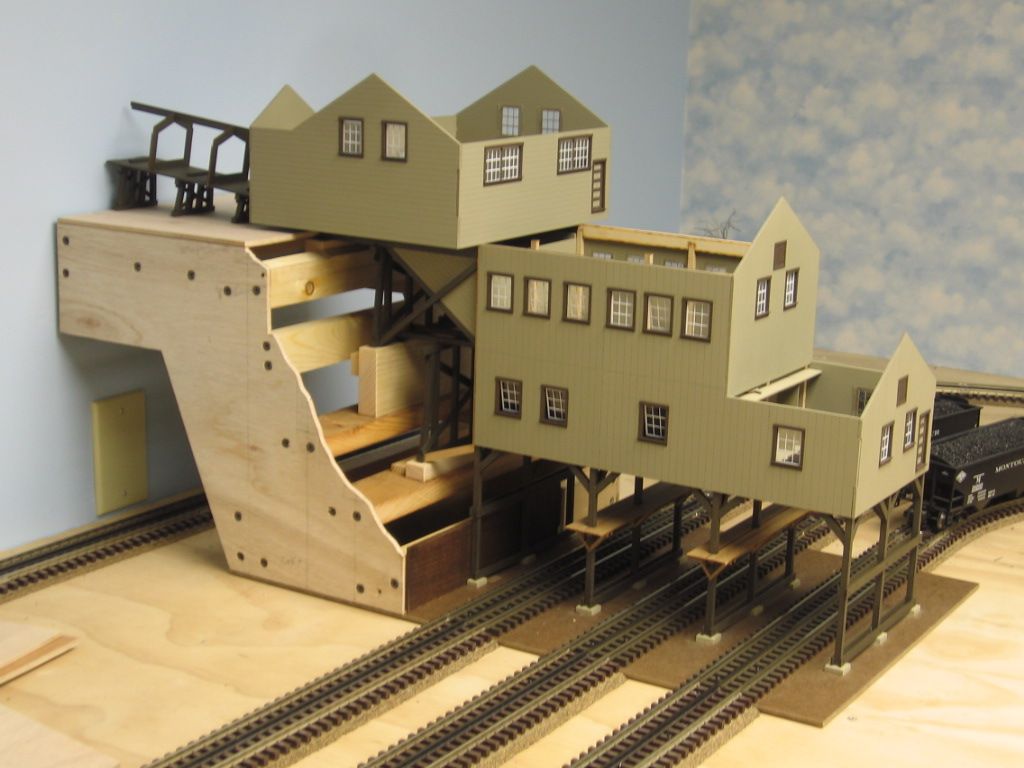Scenic Express Plaster Wrap instructions from the product roll.
Pieces of screening, stacked foam sheets, or woven corrugated cardboard strips, form an ideal base for mountains. Additiond details may be achieved by adding wads of dampened newspaper. Cut PlasterWrap in 8-12" lengths. Dip a singe piece quickly in water to activate the plaster and drape over entire mountain, overlapping previous edge by 1". Smooth with fingers to form and create terrain contours. For greater strength apply a second layer at 90 degree angle. The cloth will begin to set in 5-10minutes. It is best not to rework PlasterWrap after it has set up. PlasterWrap completey cures in 24 hours.
Woodland Scenics Plaster Cloth instructions from the product roll.
1. Roll up sheets of newspaper to form paper wads. When satisfied with height an shape of terrain contours, tape paper wads in place (Fig 1).
2. Cut approx. 12" long sheets of plaster Cloth from roll.
3. Hold corners of sheets with bumpy side facing outward. Dip sheet in pan of water (Fig 2).
4. Gently lay wet Plaster Cloth over newspaper wads (Fig 3) and spread plaster with fingertips filling in holes.
5. Overlap previous sheet by 1/2" for strength. Repeat until terrain is covered.
Allow Plaste Cloth to dry overnight, then add Woodland Scenics' landscaping materials.





